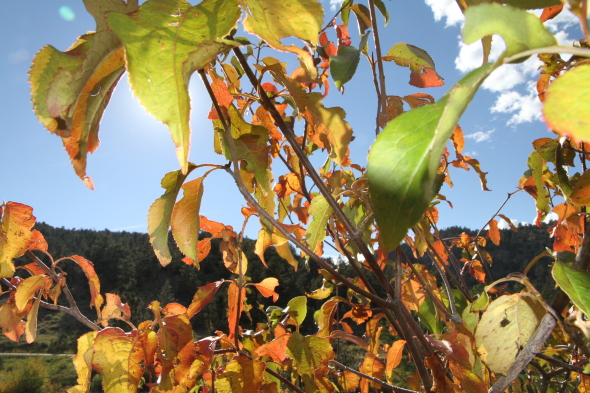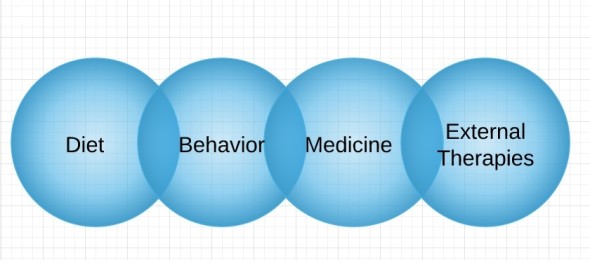Shambhala Mountain Center hosts Emotional Enlightenment: Direct Path To Compassionate Communication with Paul Shippee, December 5-7, 2014
by Paul Shippee
“Anger and blame come from the
belief that other people cause our pain
and therefore deserve punishment.”
~Marshall Rosenberg
PART I
The practice of Nonviolent Communication (NVC), also known as non-defensive communication and compassionate communication, requires a “change of consciousness.” As such it involves learning some new core skills. These interpersonal, emotional, and relational skills are new in the sense of being an alternative to familiar and habitual emotional reactivity that is often unconscious. Mindless reactivity gives rise to behavior patterns that isolate us and give rise to life-alienating experiences.
The most important core skill, besides emotional awareness, is to overcome blame.
What I mean by “change of consciousness” is really simple but not necessarily easy. It is, first, to see how our old habitual emotional reactions result in behaviors that disconnect us from others and ourselves. Then, when we re-connect with ourselves in a new way it might seem a bit strange and maybe difficult, as though we are taking on a new identity.
We can change our ingrained patterns of emotional reactivity when we become aware of what they are, and how or why they operate in us. This awareness allows us to create a change of consciousness when there is sufficient motivation and interest to do so. A change of consciousness, then, is an awakening in our being that opens us to greater vision of how to live one’s life according to one’s values. What’s the motivation for this? It is the sense of isolation, alienation and suffering.
As Anais Nin said, “And the day came when the risk to remain tight in the bud was more painful that the risk it took to blossom.”
When we gradually learn to see that our habitual emotional reactivity is clearly defensive in nature, we can examine what it is we are trying to protect. We look into the question of whether the continual habit of both our gross and subtle defenses is worth it by considering its cost to openness, warmth, connection to self and other -natural human qualities that we might like to enjoy. The task here is to gradually transform toxic reactivity into responses that connect.
After seeing, in this way, our defensive reactions for what they are, the main skill in NVC practice is learning how to honestly identify and express feelings and needs. This often translates into vulnerability, a scary place for most people and often viewed as a weakness. So a core skill here that invites a change of consciousness is inquiry, to see and acknowledge when we are being defensive, why we are being defensive and how we are being defensive. This is a key first step because you can’t change what you can’t see.
In other words, obstacles and resistance to change will continuously arise along our path toward warmth and sanity. Long-term defenses that protect against feeling the pain of unhealed emotional wounds are entrenched. They have worn deep grooves in our present consciousness called habits. In the face of such obstacles we ask ourselves: what is blocking my capacity to see and express my feelings and needs as well as to practice empathy in seeing the feelings and needs of others?
We can identify four popular ways to escape and avoid feelings. What these four have in common is that they call upon external references and thus avoid connecting with what is going on within oneself. These four obstacles are:
-complaining,
-inventing a story,
-blaming & judging,
-shifting into analytical interpretation.
Most often we discover the primary defensive strategy in this NVC inquiry is blame. When we blame others or ourselves we’re not taking responsibility for our feelings or our emotional depths. Instead we are escaping, exiting the places inside that scare us. Sooner or later we might realize that to blame is to disconnect from others and oneself. When deploying blame (as a defense) it is like an attack; we are shifting and transferring emotional pain that belongs to us onto others. This defense mechanism is sometimes referred to projection in psychology.
Part of our inquiry is to ask: what is really going on when we react to a difficult message from others, one that triggers long-buried emotional pain and discomfort that we do not want to feel? The answer is that our reactivity is designed to block and defend against feeling those unwanted feelings because they hurt. I have learned that anger and blame are most often used to cover over and hide the hurt lying underneath. I have also learned that feeling these difficult unwanted emotions is healing. It opens the door to human connection, compassionate connection. This is the whole purpose of NVC practice.

PART II
The urge to escape emotional pain is somewhat natural, a very strong habitual pattern engraved in our DNA and consciousness, in our being. But this learned behavior pattern, when no longer productive or needed, can be changed with education, motivation and practice. We can actually stop blaming others and making people wrong (so we can be right) and find that applying NVC skills can make life wonderful.
However, as long as we find more so-called safety and comfort in escaping and projecting the pain of our emotional wounds onto others than in taking responsibility by staying with the pain, then we probably won’t be motivated to change. We still prefer escape, whereas change involves the risk of communicating and sharing “what’s alive in us” …feelings and needs.
So blame, as a primary escape strategy, blocks the warmth and connection possibilities with self and others. Alternatively, the human connection of replacing reactivity with response feels satisfying and more fully human than our defensive strategies. However strange and uncomfortable it may seem at first, a slogan I created to capture the essence of how to change our consciousness, and take responsibility for our difficult emotions, goes like this: “cut the blame, stay with the pain.” Mastering this core skill is a healing activity that uncovers the natural inherent wisdom and compassion, spiritual awakenings that can open the door to authentic self-love and peace. On the other hand, bypassing this emotional awareness and healing opportunity can present obstacles to a genuine spiritual path.
Of course, there are many other subtle and not-so-subtle defensive behaviors besides blame that can block feeling and foster disconnection and distance, such as one-up-man-ship, interrupting, making others wrong, etc. Ideally, the wholesome process of NVC practice, preferably done in a group, will offer an opportunity to see through all defensive strategies and gradually move beyond them.
“The dynamic communication techniques of Nonviolent Communication transform potential conflicts into peaceful dialogues. You’ll learn simple tools to defuse arguments and create compassionate connections with your family, friends, and other acquaintances.”
John Gray, Ph.D., author, Men Are From Mars, Women Are From Venus
To learn more about NVC interpersonal relationship skills read, Nonviolent Communication –A Language of Life and visit http://cnvc.org
~~~
 Paul Shippee, MA Psychology, studied Nonviolent Communication (NVC) intensively with founder Marshall Rosenberg and other NVC trainers. He has facilitated NVC groups continuously for the past 8 years and teaches NVC workshops around the country.
Paul Shippee, MA Psychology, studied Nonviolent Communication (NVC) intensively with founder Marshall Rosenberg and other NVC trainers. He has facilitated NVC groups continuously for the past 8 years and teaches NVC workshops around the country.
 Travis Newbill is a curious dude on the path of artistry, meditation, and social engagement who is very glad to be residing at Shambhala Mountain Center. His roles within the organization include Marketing Associate and Shambhala Guide — a preliminary teaching position. Follow Travis on twitter: @travisnewbill
Travis Newbill is a curious dude on the path of artistry, meditation, and social engagement who is very glad to be residing at Shambhala Mountain Center. His roles within the organization include Marketing Associate and Shambhala Guide — a preliminary teaching position. Follow Travis on twitter: @travisnewbill












